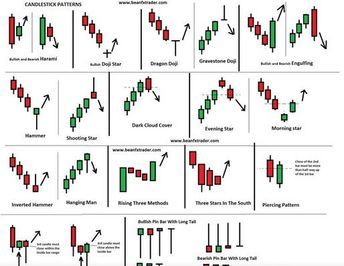Mastering Forex Orders for Better Trade Management
In forex trading, understanding different order types is crucial for executing trades effectively and managing risk wisely.
Each order type serves a unique purpose and can match specific trading strategies. This cheat sheet simplifies the most common forex trading orders—what they do, how they work, and when to use them.
📌 1. Market Order
Definition:
An order to buy or sell immediately at the best available current market price.
Purpose:
To ensure instant execution of a trade.
Example:
You buy EUR/USD at the current ask price of 1.1052. The order fills instantly.
✅ Advantages:
- Fast execution
- Simple and beginner-friendly
- Ensures trade is filled in liquid markets
❌ Disadvantages:
- No price control
- Possible slippage in volatile markets
- Risky in illiquid conditions
Best For:
Urgent entry/exit in fast-moving markets.
📌 2. Limit Order
Definition:
An order to buy or sell at a specific price or better.
Purpose:
To enter or exit trades at a desired price, providing price control.
Example:
You set a buy limit at 1.1000. It will only trigger if the price drops to 1.1000 or below.
✅ Advantages:
- Full control over price
- Reduces slippage risk
- Great for setting precise targets
❌ Disadvantages:
- May not execute if the price doesn’t reach your level
- Could miss profitable opportunities
Best For:
Traders who prioritize price over speed.
📌 3. Stop Order (Stop-Loss Order)
Definition:
An order that becomes a market order once a specified price (stop price) is reached.
Purpose:
To minimize losses or protect profits by exiting a trade when the market moves unfavorably.
Example:
Bought EUR/USD at 1.1050. Stop-loss at 1.0950. If the price hits 1.0950, the order triggers and closes the trade.
✅ Advantages:
- Automates risk control
- Offers peace of mind
- Doesn’t require active monitoring
❌ Disadvantages:
- Might execute at a worse price than expected (due to slippage)
- Can be triggered by short-term price spikes
Best For:
Risk management and limiting potential losses.
📌 4. Stop Limit Order
Definition:
A two-tiered order: triggers when the price hits the stop level, then becomes a limit order to be filled at a specific or better price.
Purpose:
To gain precision in execution price while managing risk.
Example:
Stop at 1.0950, limit at 1.0900. Trade triggers at 1.0950, but will only fill at 1.0900 or better.
✅ Advantages:
- Prevents slippage
- Combines stop-loss control with price control
- Customizable to suit strategy
❌ Disadvantages:
- May not execute if the limit price isn’t reached
- Risk of partial fills or no fills at all
Best For:
Experienced traders who want both protection and precision.
📌 5. Trailing Stop Order
Definition:
A dynamic stop order that follows the market price as it moves in your favor but stays fixed if it moves against you.
Purpose:
To lock in profits while allowing the trade to continue running in a favorable direction.
Example:
You buy EUR/USD at 1.1050 with a 50-pip trailing stop. If the price rises to 1.1100, the stop adjusts to 1.1050. If the price drops to 1.1050, the trade closes.
✅ Advantages:
- Secures gains while allowing upside potential
- Automatically adjusts with the market
- Reduces emotional decision-making
❌ Disadvantages:
- Not suitable in choppy markets due to false triggers
- Requires careful setting of trailing distance
Best For:
Swing traders or trend-followers aiming to ride profitable trades.
📝 Conclusion
Each order type serves a strategic function:
- Market Order: Speed over price
- Limit Order: Price over speed
- Stop Order: Protect from big losses
- Stop Limit Order: Balance of risk and control
- Trailing Stop: Lock profits on autopilot
Choosing the right order type depends on your goals, market conditions, and trading style. This cheat sheet can serve as your go-to guide as you refine your forex strategies and manage trades with more confidence.
Join Our Political Forum official 2025 WhatsApp Channel To Stay Updated On time https://whatsapp.com/channel/0029VaWT5gSGufImU8R0DO30


